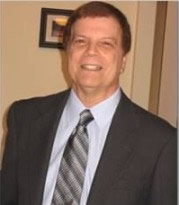Basic but very important points which could help minimize owners' liability and financial exposure to accident and personal injury claims on their premises.
When you walk into a restaurant, lounge, hotel lobby, mall food court, medical office waiting room, university dining hall or almost any commercial facility for the first time; a substantial part of the "image" and your overall perception of that location and business, is shaped by the aesthetic design and condition of the seating.
Most people think of chairs, bar stools and lounge seating as a "commodity type item", i.e. products which are developed, designed and manufactured in a generally similar manner. Nothing is farther from the truth.
Among the many thousands of seating designs produced and installed all over the world each year, there are critical differences beyond just the overall look and aesthetic design of the chair and its cost. Seating design is a very unique discipline encompassing a wide range of interconnected analyses and thought processes:
- Into what type of location will these chairs be installed?
- What functionality needs to be integrated into the design? (i.e. stacking, easily moveable on casters, flexible back)
- What is the targeted selling price range?
- What is the optimal material to utilize for this design? (i.e. wood, plastic, steel tube, aluminum, resin, molded foam)
- What types of customers will be using this seating?
- Will the seating need to be small, medium or large scale?
- What is the targeted level of comfort? (i.e. not very much for 15-20 minute food court use versus extremely comfortable for 2 hour meal in a 5 star restaurant)
- Will this be a normal commercial use environment (like a bank or corporate office) or an "intensive use" application, i.e. 24/7 three shifts per day continuous use, university dormitory, casino, etc...?
- What approach will be used for the construction and engineering aspects of the seating?
- How much of the reinforcing construction needs to be hidden versus exposed?
- What is the targeted "personality" of the chair? (i.e. contoured and curved, thin line, more angular and squared, thicker stock)
- After taking all of the above points into consideration, the chair components now need to be individually designed and engineered, sourced and then integrated into a proper manufacturing process, qualified factory operation with strong quality control procedures.
- Prior to final order approval, the business owner should evaluate an actual sample chair under the exact same conditions and in the specific location of the final installation. For example, if the chair is being used in a hotel lobby on thick pile carpet, the sample chair needs to be placed and thoroughly evaluated in the specific intended environment, using people of various ages and sizes; simulating actual normal use conditions.
WHAT SHOULD HAPPEN WHEN THE SEATING FIRST ARRIVES AT THE INTENDED LOCATION?
This is where the potential financial and legal exposure comes into sharper focus.
Upon delivery the end user must closely inspect each chair, making sure there is no visible damage, i.e. cracked frame elements, legs, seat rails, all joints and connection points are tight and flush, glides properly affixed to the bottom of each leg, etc... If any of these issues arise, the end user must immediately go on record with the manufacturer and follow through for correction, repair or replacement if necessary.
In commercial use applications, any of these initially non-inspected defects can manifest themselves in a sudden and potentially serious accident or catastrophic failure involving a customer.
WHAT NEEDS TO BE DONE ON A CONTINUING BASIS TO BETTER PROTECT THE BUSINESS OWNER?
First, the manufacturers' care, maintenance and recommended inspection procedures must be read, clearly understood and then become part of the location's training process and written operational procedures. The manufacturer will publish this important information either on the labels affixed under each chair and/or in their price list terms and conditions.
Normally in a commercial use situation, all chairs should be closely visually inspected once a month to make sure that all frame joints are tight and flush, with no visible cracks or abnormal separations. Underneath the seat and the legs (along with any stretchers) should also be inspected. The glides should all be properly affixed to the bottom of each leg as well. This regular inspection process is vital to maintaining the stability and overall safety of all seating.
The chairs should be sat in to make sure there is no wobble or cracking type sounds. Also, to make sure the seats and/or backs are firmly attached. Any chairs showing a potential defect should be immediately removed from service and the specific issues repaired or replaced according to the manufacturer's service procedures and warranty.
It is also important for the business to maintain a very simple record or log of these inspections. This type of documentation can be important if any accident or injury claims arise.
Having been involved from both the plaintiff and defense perspectives with all types of personal injury and litigation claims over the past 28 years, involving all types of seating designs, widely varying installations, distinctly different usage patterns and end customers of all ages, shapes and sizes throughout the U.S.; the best advice to all business owners and on-site management is to PAY MORE ATTENTION TO THE CHAIRS.










